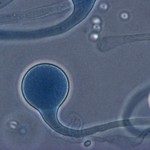Lien vers Pubmed [PMID] – 33820766
Lien DOI – 10.1128/AAC.02615-20
Antimicrob Agents Chemother 2021 May; 65(6):
Invasive yeast infections represent a major global public health issue, and only few antifungal agents are available. Azoles are one of the classes of antifungals used for treatment of invasive candidiasis. The determination of antifungal susceptibility profiles using standardized methods is important to identify resistant isolates and to uncover the potential emergence of intrinsically resistant species. Here, we report data on 9,319 clinical isolates belonging to 40 pathogenic yeast species recovered in France over 17 years. The antifungal susceptibility profiles were all determined at the National Reference Center for Invasive Mycoses and Antifungals based on the EUCAST broth microdilution method. The centralized collection and analysis allowed us to describe the trends of azole susceptibility of isolates belonging to common species, confirming the high susceptibility for Candida albicans (n = 3,295), Candida tropicalis (n = 641), and Candida parapsilosis (n = 820) and decreased susceptibility for Candida glabrata (n = 1,274) and Pichia kudriavzevii (n = 343). These profiles also provide interesting data concerning azole susceptibility of Cryptococcus neoformans species complex, showing comparable MIC distributions for the three species but lower MIC50s and MIC90s for serotype D (n = 208) compared to serotype A (n = 949) and AD hybrids (n = 177). Finally, these data provide useful information for rare and/or emerging species, such as Clavispora lusitaniae (n = 221), Saprochaete clavata (n = 184), Meyerozyma guilliermondii complex (n = 150), Candida haemulonii complex (n = 87), Rhodotorula mucilaginosa (n = 55), and Wickerhamomyces anomalus (n = 36).






